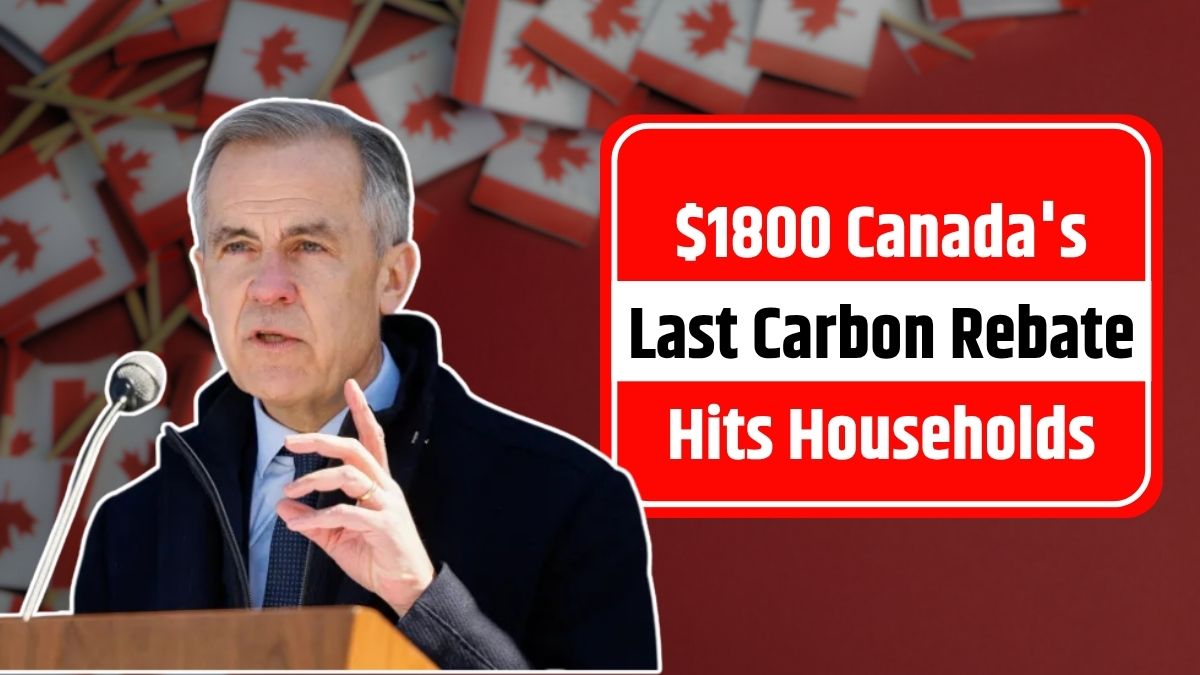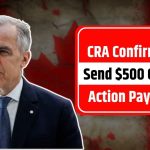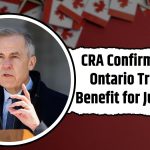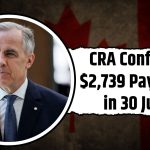The Carbon Rebate Canada 2025 marked one of the most significant federal measures to help Canadians cope with rising energy costs due to carbon pricing. Designed to offset the financial burden of the federal carbon tax, the rebate has provided direct quarterly payments to households in provinces affected by federal fuel charges.
While the consumer portion of the federal carbon tax was officially removed on April 1, 2025, the final scheduled carbon rebate payments, including those for August 2025, have already been issued. This article outlines the provincial payout amounts, eligibility details, and the program’s broader impact.
What Is the Carbon Rebate Canada 2025?
The carbon rebate was introduced as part of Canada’s climate strategy to return most of the revenue collected through federal carbon pricing back to residents. This system applied in provinces that did not implement their own carbon pricing programs aligned with federal standards.
Rebate amounts were progressive, meaning low- and middle-income households received proportionally more, helping to cushion them against higher fuel and utility costs triggered by carbon pricing.
How the Carbon Rebate Worked
The rebate operated under Canada’s federal carbon pricing framework, which placed a fuel charge on fossil fuels in select provinces. The revenue collected from this charge was then redistributed to residents in those provinces in the form of quarterly payments.
Eligibility for the rebate required:
- Filing a personal income tax return
- Residing in an applicable province during the rebate period
- Meeting income requirements set by the CRA
- Rural residency, in some cases, qualified individuals for an additional top-up to account for higher energy needs.
Carbon Rebate August 2025 — Payout Amounts by Province
The following table shows the annual rebate totals for a family of four in each eligible province. These amounts reflect regional fuel charges and include rural supplements where applicable.
| Province/Territory | Annual Rebate (Family of 4) | Notes |
|---|---|---|
| Alberta | $1,800 | Highest rebate due to highest fuel charge |
| Manitoba | $1,200 | Includes rural top-up |
| Ontario | $1,120 | Additional rural top-up available |
| Saskatchewan | $1,504 | Includes rural top-up |
| New Brunswick | $760 | Rural supplement included |
| Nova Scotia | $824 | Includes rural top-up |
| Prince Edward Island | $880 | All residents receive rural supplement |
| Newfoundland & Labrador | $1,192 | Rural top-up included |
These amounts represent the total annual benefit, divided over four quarterly payments, with the final installment made in August 2025.
Who Was Eligible for the Carbon Rebate?
To receive the Canada Carbon Rebate in 2025, residents needed to meet the following criteria:
- Live in a province where the federal carbon pricing system applied.
- File an income tax return for the relevant tax year.
- Meet CRA-defined income thresholds.
- Reside in a rural area, if claiming the rural supplement.
Rebate payments were automatic for those who qualified and filed their taxes on time — no separate application was required.
How the Payments Were Made
The Canada Revenue Agency (CRA) issued the rebates using the same method as other federal benefit programs. Payments were typically deposited directly into the recipient’s bank account, or mailed as cheques if no direct deposit information was on file.
The August 2025 rebate was the final quarterly installment for the 2024–2025 rebate year.
Impact of the Carbon Rebate on Canadian Families
The Carbon Rebate Canada 2025 played a crucial role in making carbon pricing more affordable for households, especially those with lower incomes and higher energy usage.
In many cases, families received more in rebates than they paid in carbon taxes, effectively offsetting the added cost of fuel and heating. For example, in Alberta, where fuel charges were highest, a family of four received up to $1,800 per year, offering considerable relief.
The rebate program also aligned with Canada’s climate goals by encouraging energy efficiency, while ensuring households weren’t disproportionately impacted by the transition to cleaner energy.
What Happens Next? The End of the Consumer Carbon Tax
On April 1, 2025, the consumer portion of the federal carbon tax was removed, marking a significant policy shift. As a result, August 2025 was the final scheduled carbon rebate payment.
Currently, no new rebate programs have been announced to replace it, but Canadians are advised to stay updated on future federal or provincial climate-related financial support that may emerge.
Frequently Asked Questions (FAQs)
Q1. What is the Carbon Rebate Canada 2025?
It’s a federal rebate program that returned revenue from the carbon tax back to residents in affected provinces to offset increased fuel and heating costs.
Q2. Who was eligible for the rebate?
Anyone who:
- Lived in an affected province
- Filed an income tax return for the year
- Met CRA income requirements
- Lived in a rural area (for additional top-up)
Q3. How much was the rebate?
It varied by province. For a family of four, annual rebates ranged from $760 to $1,800, depending on location and rural status.
Q4. Do I need to apply to receive it?
No application is needed. The CRA processes payments automatically based on your income tax filing.
Q5. When was the final payment issued?
The final payment was disbursed in August 2025, concluding the rebate cycle.
Q6. Will there be rebates in the future?
There are no confirmed future rebates at this time. Canadians should watch for updates on new government programs.








